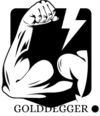Introduction to Affiliate Marketing
Affiliate marketing might sound like a buzzword, but it’s one of the most powerful and accessible ways to make money online. Whether you’re a stay-at-home parent, a student, or someone tired of the 9-to-5 grind, affiliate marketing can open doors to financial freedom — without having to create your own product or service.
Table of Contents
Toggle
What Is Affiliate Marketing?
In simple terms, affiliate marketing is a performance-based earning model where you promote someone else’s product and earn a commission for every sale, click, or lead you generate. It’s like being a digital salesperson — but on your own terms, and often from the comfort of your home.
Why Is Affiliate Marketing So Popular?
Because it’s low-risk, low-cost, and potentially high-reward. You don’t need inventory, customer service skills, or huge upfront investment. All you need is a device, internet connection, and the drive to learn and take action.

How Affiliate Marketing Works
The Key Players in Affiliate Marketing
Understanding the core elements of the affiliate marketing ecosystem is essential:
The Merchant
Also known as the seller or creator — this could be a company like Amazon, or an individual selling an online course or physical product.
The Affiliate (You!)
You’re the one promoting the product. You’ll use your blog, YouTube, social media, or email list to drive traffic and sales.

The Consumer
The buyer who clicks on your link and purchases the product.
The Affiliate Network
A middleman platform like CJ Affiliate, ShareASale, or ClickBank that tracks sales and handles payments between merchants and affiliates.
The Process Flow from Click to Commission
You join an affiliate program.
You receive a unique tracking link.
You share that link in your content.
A consumer clicks the link.
The consumer makes a purchase.
You get paid a commission.
Easy? Yes. Effortless? Not quite — but definitely doable.

Getting Started with Affiliate Marketing
Choosing a Niche
Picking a niche is the foundation of your affiliate journey.
Passion vs. Profit
Find the sweet spot between something you’re passionate about and what’s profitable. Love fitness? Great. Interested in tech? Even better.
Researching Demand
Use tools like Google Trends, Ubersuggest, and Ahrefs to see if your niche has a hungry audience looking for solutions.

Selecting the Right Affiliate Programs
Not all affiliate programs are created equal.
CPA, CPS, CPL – What Do They Mean?
CPA: Cost Per Action
CPS: Cost Per Sale
CPL: Cost Per Lead
Know what you’re signing up for!

Top Affiliate Networks for Beginners
Amazon Associates
ShareASale
CJ Affiliate
Rakuten
ClickBank

Setting Up for Success
Building Your Platform
Start where you’re comfortable:
Blog if you like writing
YouTube if you enjoy video
Instagram/TikTok if you’re into short content
Creating a Website (Simple WordPress Setup)
A self-hosted WordPress site gives you full control and credibility. Get a domain, hosting, and install a basic theme — you’re ready to go.

Tools You’ll Need to Start Affiliate Marketing
Link Tracking
Use tools like ThirstyAffiliates or Pretty Links to manage and cloak your links.
Email Marketing
Build your email list early with tools like ConvertKit or MailerLite.
SEO Tools
Google Search Console, Ahrefs, and Yoast SEO help you optimize your content and rank on Google.

Content Creation Strategies
Types of Content That Convert
Product Reviews
Be honest. Share personal experiences. People trust authenticity.
How-to Guides
Teach your audience how to solve a problem using a product you’re promoting.
Listicles
People love lists. “Top 10 Budget Laptops” or “5 Must-Have Kitchen Tools” are goldmines for affiliate links.

SEO Basics for Affiliate Marketers
Do keyword research
Optimize your titles, meta descriptions, and images
Use internal linking and high-quality backlinks
Writing Engaging and Authentic Content
Write like you’re talking to a friend. Add stories, examples, and personality to build trust and encourage clicks.
Driving Traffic to Your Affiliate Links
Organic Traffic vs. Paid Traffic
Organic (SEO, social) is slower but free. Paid (Google Ads, Facebook Ads) is faster but requires budget and testing.
Leveraging Social Media Platforms
Instagram, Pinterest, TikTok, and Facebook are powerful tools to reach an audience without needing a website initially.
Using Email Marketing to Boost Conversions
Create a simple lead magnet like an ebook or checklist. Build a relationship through email, and promote relevant products subtly.

Earning and Scaling
Understanding Commissions and Payments
Some pay weekly, others monthly. Some offer recurring commissions. Understand the payment structure before committing.
Scaling Up: Automation and Outsourcing
Use tools like Zapier for automation, and consider hiring a writer or virtual assistant to scale your efforts.

Common Mistakes to Avoid
Promoting too many products
Not disclosing affiliate links
Focusing on sales instead of value
Ignoring SEO
Conclusion
Affiliate marketing isn’t a get-rich-quick scheme — but it is a powerful way to earn a full-time income with time, consistency, and smart strategy. Start small, focus on value, and scale slowly. Remember, your audience’s trust is your most valuable currency. Respect it, and the commissions will follow.

FAQs
Can You Start Affiliate Marketing With No Money?
Yes, you can begin using free blogging platforms, social media, or YouTube. However, investing in a website gives you more control and credibility.
How Long Does It Take to Make Money?
It depends on your niche and strategy. Some see results in a few months, while others take longer. Consistency is key.
Is Affiliate Marketing Passive Income?
Partially. Once content is created and ranked, it can earn money passively, but ongoing effort is needed for growth.
Do I Need a Website to Start?
Not necessarily. Social media, YouTube, and email marketing can also be effective. But having a site helps build long-term authority.
Is Affiliate Marketing Legal and Safe?
Absolutely. Just follow FTC guidelines, disclose your affiliate links, and choose reputable programs.


